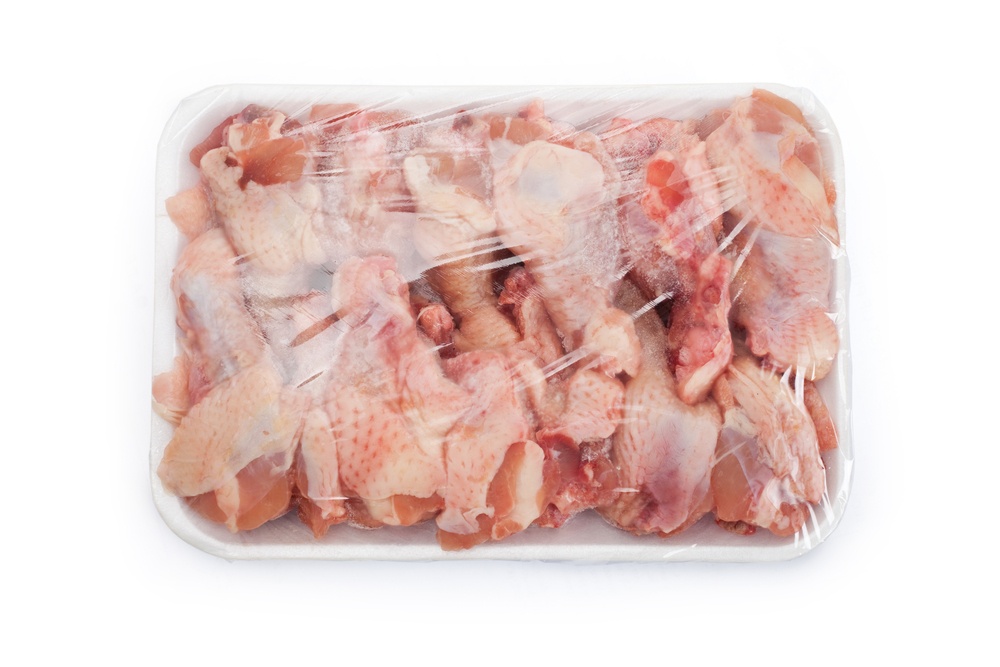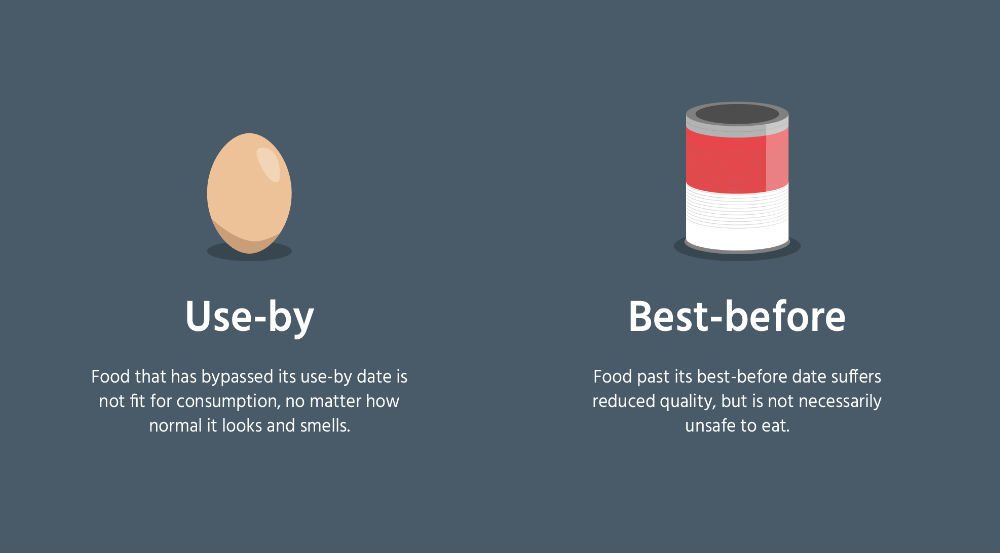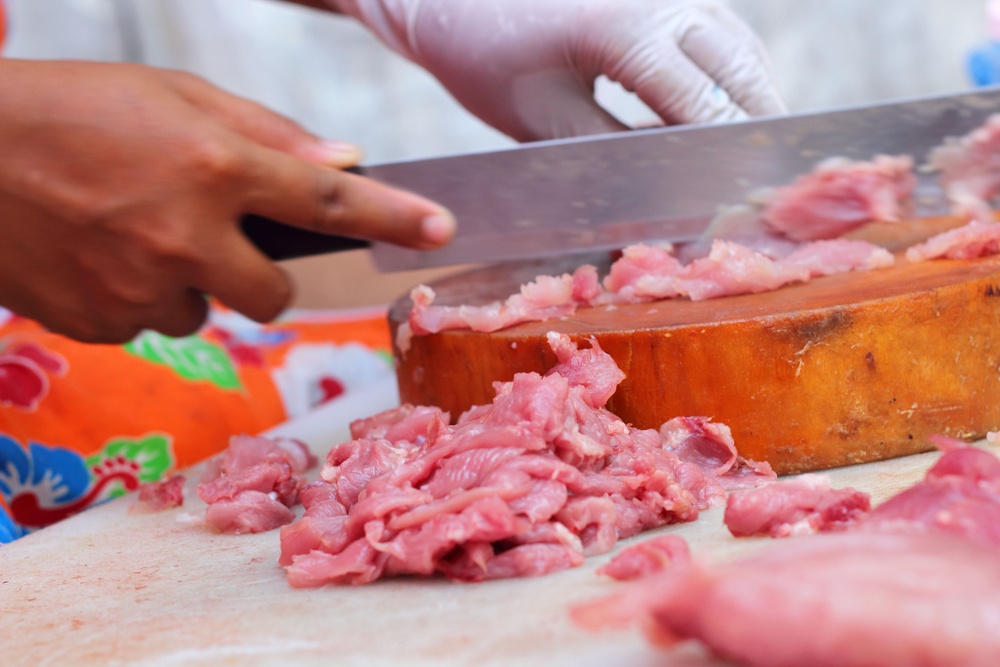Food safety and storage advice for commercial kitchens
Caterers and cooks have a legal responsibility when it comes to food hygiene, but preparing and storing food properly isn’t just about preventing upset stomachs: it can help you reduce costs, save time, and serve the tastiest possible food to your clients.
If you work in the catering or hospitality industry, read on for food preparation, service and storage advice that will make your commercial kitchen more efficient and more effective.
Cleaning in a commercial kitchen
- Cookware, crockery, cutlery and other catering equipment should be cleaned in a dishwasher wherever possible. If this is not an option, you must thoroughly wash equipment in hot soapy water before rinsing in very hot water. Leave to air-dry or dry with clean disposable cloths.
- Surfaces should be cleaned and rinsed between tasks, and before they are used for food preparation.
- Disposable cloths should be used wherever suitable. If reusable cloths or tea towels must be used, ensure they are disinfected in a 90° wash between tasks.
- You should only purchase disinfectants and sanitisers that meet BS EN standards. Ensure all your cleaning chemicals are stored in clearly marked containers, away from food.
Take a look at our kitchen cleaning department if you need any supplies.
Personal hygiene
What to wear in a commercial kitchen
It is recommended that caterers change into clean clothes immediately before entering a food preparation area. If you wear your uniform on your way to work or while shopping for ingredients, there’s a much larger risk of picking up and then spreading germs. The Food Standards Agency recommends wearing light-coloured garments with no external pockets.
It is also good practice to wear an apron. As you should change your apron after working with raw food, you will need to have a few clean aprons or disposable aprons on hand. Cooks should also consider wearing a hairnet or chef’s hat, and tying long hair back.
Take a look at our chef’s clothing range if you’d like to shop for any of these products.
Remember: Watches and jewellery should be removed, and any cuts should be covered with brightly coloured waterproof plasters like these.
Handwashing in a commercial kitchen
Food professionals should wash their hands:
- before handling food,
- after handling raw food (or contaminated packaging),
- after coming into contact with cleaning chemicals,
- after coming into contact with bins, dirty equipment or unclean surfaces,
- before and after administering first aid, and
- after re-entering a food preparation area following a break.
You should use warm running water and liquid soap to clean your hands, and disposable towels to dry them.
To reduce the risk of contamination from underneath fingernails and wedding bands, you can use disposable gloves while handling food. However, they should be changed as frequently as hands would be washed. Our range of food preparation gloves includes a variety of sizes, as ill-fitting gloves can fall off or stretch and tear.
How to store food in a commercial kitchen

Storing food effectively will help ensure it remains safe to consume, and better retain its quality. That means less wastage and happier customers.
You can find out whether food should be kept chilled, frozen or at room temperature by consulting the packaging.
Accepting food deliveries
You should organise raw and ready-to-eat food deliveries separately, to reduce the risk of cross-contamination. Make sure to buy from a trusted supplier who keeps food at the appropriate temperature during transportation, and complies with other food safety guidelines.
Unpack your food in a clean area, making sure to keep an eye out for warning signs such as damaged packaging, mould, and expired use-by dates. If you remove packaging, make sure to retain any important information off the labels, such as use-by dates.
Storing chilled foods
In England, Wales and Northern Ireland, it is a legal requirement that chilled food be kept at 8°C or below. To make sure this is the case, you should set your fridge or refrigerated display cabinet to 5°C. Chilled food can remain out of refrigeration on one occasion for up to four hours – any more, and it must be thrown away.
Try to store raw and ready-to-eat foods separately. If this is not possible, store raw food below ready-to-eat food, with raw meat below raw fruit and vegetables.
Once opened, you should wrap your food and label with the use-by or best-before date (remember that this may change once the original packaging has been opened).
Click here to browse our range of fridges and refrigerated display cabinets.
Storing ambient foods
Ambient foods, also known as shelf-stable foods or cupboard foods, can be safely held at room temperature. They have a relatively long shelf life, and rarely have a use-by date: quality is usually compromised far before safety.
The packaging provided with ambient foods – usually a tin, jar or air-sealed plastic packet – is designed to protect your food from perishing. However, food becomes prone to spoiling once the original packaging is opened – check packaging for ‘Once opened, consume within # days’ advice. Wrapping your opened food properly will help extend its lifespan.
Storing pre-frozen foods
Foods manufactured to remain frozen, such as ice-cream or frozen chips, should be stored in your freezer as soon as they are delivered. Leaving them out at higher temperatures puts their safety and quality at risk.
Bacteria cannot grow at -18°C or lower, so food frozen at this temperature should remain safe to consume indefinitely. However, the quality will begin to suffer over time – that’s why frozen foods come with best-before dates.
When storing pre-frozen food at temperatures higher than -18°C, there is a risk of bacterial growth and quality will deteriorate more quickly. You can find out what temperature your freezer or different compartments of your freezer operate at by consulting the star rating(s). The packaging should explain the recommended storage times for different star ratings.
| **** | -18°C or lower |
| *** | -18°C |
| ** | -12°C |
| * | -6°C |
We stock a variety of commercial freezers in our refrigeration department.
Wrapping opened foods

Most food comes in packaging designed to maximise shelf life, so once this is opened, food is more prone to spoiling and deteriorating in quality. The same goes for fruits and vegetables that have been cut into pieces. If you wish to put some of this food back into storage, wrapping it properly will prolong its shelf life.
Vacuum-packing is the most effective way to wrap opened foods, because it eliminates exposure to air – and therefore bacteria. You can purchase vacuum-packing equipment here. Alternatively, wrap your food in cling film or foiland place inside an airtight container.
When wrapping up any food, remember to label with the ‘once opened’ use-by or best-before date.
Understanding use-by and best-before dates
Perishable foods, such as fresh meat, have use-by dates. Food that has bypassed its use-by date is not fit for consumption, no matter how normal it looks and smells. Conversely, food within its use-by date is not necessarily safe for consumption – you should still look out for warning signs such as unusual smells. It is illegal to sell food past its use-by date.

If you have foods that are approaching their use-by date which you do not think will be used, there are several preservation techniques you can use to extend their lifespan. Find out more in the section below.
Frozen, tinned and other long-life foods have best-before dates rather than use-by dates. Food past its best-before date suffers reduced quality, but is not necessarily unsafe to eat. However, Trading Standards states that food sold must be “of the quality demanded by the purchaser”, so caterers and chefs are well advised to avoid serving food past its best-before date.
Remember that use-by dates and best-before dates do not necessarily apply once packaging has been opened, or if foods are not stored in the recommended conditions. Always be cautious and seek additional information in these situations.
Tip: In order to minimise food waste, you should stick to the rule of ‘first in, first out’. Always use the oldest stock available – as long as it is still suitable for consumption.
How to preserve foods
Food preservation techniques can allow you to safely consume perishable foods – and maintain their quality – beyond their original use-by date. These methods include curing/salting, smoking, pickling, fermenting and canning.
In the sections below, you will find advice on three of the most commonly used preservation techniques: freezing, cooking and drying/dehydrating.
Freezing perishable foods
You can expand the lifespan of perishable freezer-safe foods, such as fresh meats, by freezing them prior to their use-by date. However, you must consume food within 24 hours of defrosting, no matter when it was frozen.
Freezer-safe, perishable foods can be frozen in four-star freezers operating at -18°C or lower. They should not be frozen in ice-making compartments or anywhere else operating at a higher temperature (three-star or less).
Bacteria cannot grow at -18°C or lower, so food frozen at this temperature should remain safe to defrost indefinitely. However, the quality of frozen food deteriorates over time. Food packaging usually recommends a maximum frozen storage duration; use this information to label your food with a best-before date on the day of freezing.
To reduce the risk of freezer burn, which can affect the taste and texture of food, you need to minimise the food’s exposure to air. The most effective solution is vacuum-packing your food in freezer-safe bags. Alternatively, wrap in cling film and place inside freezer-safe airtight boxes.
Please note: Food should never be frozen more than once, even if it has been cooked after defrosting.
You can shop for four-star freezers in our refrigeration department. We also stock vacuum-packing equipment.
Defrosting food
Food must be thoroughly defrosted before consumption or cooking (this does not apply to pre-frozen food). Defrosted food should be consumed within one day, and never re-frozen. Label food on the day it is defrosted so it isn’t mistakenly used the next day.
It is best to defrost food in the fridge, separate from or below ready-to-eat food. You can defrost food at room temperature, in the microwave, or under cold running water (do not do this with raw meat or poultry, as you risk splashing germs around your kitchen) as long as it is immediately served, refrigerated or cooked once defrosted.
Cooking and chilling perishable foods
Use-by dates on fresh food packaging no longer apply once the food is cooked – the cooking process gives ingredients a new lease of life by killing any bacteria that has grown. Cooking and then chilling down foods on their use-by date is therefore an effective way to prevent food waste.
There is no definitive lifespan on foods that have been cooked and then chilled down. However, it is usually recommended that foods are reheated or consumed cold no later than two days after being cooked and chilled.
Drying/dehydrating perishable foods
Bacteria needs moisture to grow, so dehydration is an effective food preservation technique. You can use our dehydratorswith a variety of fruits, vegetables and pulses.
For best results, vacuum-pack your dried foods and store in a cool, dry, dark place. It is recommended that you consume dehydrated fruits and vegetables within one year.
Preparing and serving food
Preparing raw food
- Fruits, vegetables and salad leaves should be rubbed and rinsed in clean water.
- Raw meats and poultry should not be washed, as this unnecessarily increases the risk of spreading harmful germs around your kitchen.
- If possible, use separate chopping boards for raw fruit and vegetables, raw meat, raw poultry, and ready-to-eat foods.

Cooking meat safely
- Beef, lamb and tuna can be served rare when cooked alone. However, the outside surface should be cooked.
- Beef, lamb and tuna cannot be served rare if forming part of a combination dish, such as a pie.
- Liver, offal, rolled joints, pork, poultry and processed meats must be cooked through, with no pink or red meat remaining.
- Pork joints, rolled meat joints and poultry should be cooked until the juices run clear.
Working with hot food
Holding hot food
In England, Wales and Northern Ireland, it is a legal requirement that hot food be held at 63°C or above. So if you are serving hot food on a buffet or similar, you should use hot holding equipment like this to maintain the temperature. Remember that food should be properly cooked or thoroughly reheated before being transferred to hot holding.
Hot food can remain out of hot holding on one occasion for up to two hours, and within this time, it can be reheated once or chilled.
Chilling hot food
Hot food that you wish to serve or store cold must be chilled down to 8°C or below as quickly as possible – ideally within two hours. However, you should not put hot food straight into the fridge or freezer, as this will raise the appliance’s temperature and promote bacterial growth.
Using a blast chiller is the most efficient way to cool food. You can find a range of blast chillers on our website. Otherwise, dividing your food into smaller portions, standing containers in cold water or ice, and stirring will all help lower the temperature more quickly.
Once cooled and wrapped, hot food can be refrigerated for up to two days – label packaging with the use-by date accordingly. Alternatively, freeze in a four-star freezer and consume within one day of defrosting.
Reheating food
Food can only be reheated once, and should be reheated until piping hot all the way through. Dividing food into smaller portions and stirring regularly will help ensure food is reheated evenly. In Scotland, food must be reheated to a minimum of 82°C.
Any questions?
If you need any help purchasing the right equipment for your food business, please don’t hesitate to get in touch with the experts here at Alliance Online. Call 0844 499 4300 8.30am–6pm Monday–Friday, or send an email to hello@allianceonline.co.uk. We also stock a range of kitchen essentials which you can shop for here in order to ensure your commercial kitchen has everything you need!
Disclaimer: Much of the information in this guide is based on advice from the Food Standards Agency (Crown copyright). However, this is not a comprehensive guide, and should not be relied upon for legal information. For the most reliable information, see the food.gov.uk website. If you are outside the UK, please consult your local government website.

